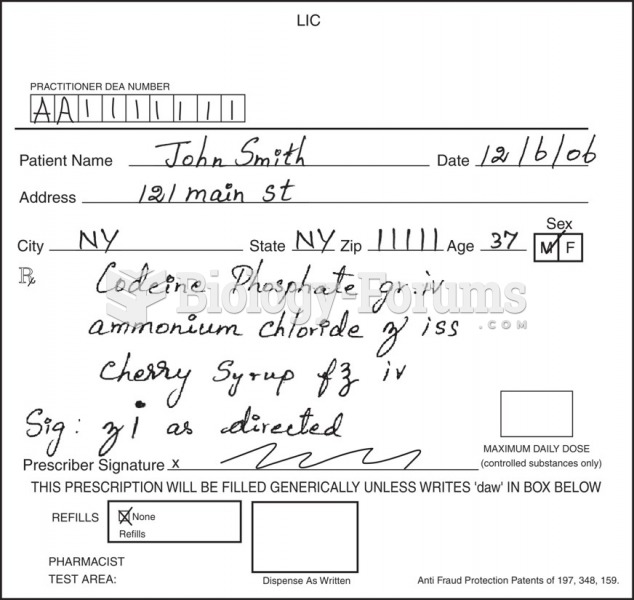Answer to Question 1
Correct Answer: 2, 3, 5
Rationale 1: The dose of this medication should not be increased without instruction to do so by the physician.
Rationale 2: The client should maintain adequate fluid intake to help prevent constipation.
Rationale 3: The medication should be held if respirations are fewer than 12 breaths per minute.
Rationale 4: OTC sleep-inducing antihistamines should be avoided when a client is taking oxycodone.
Rationale 5: This medication can cause constipation; therefore, it is important to teach the client to use OTC medications to treat this, if needed.
Global Rationale: The client should maintain adequate fluid intake and can take OTC medications to help prevent constipation. The medication should be held if respirations are fewer than 12 breaths per minute. The dose of this medication should not be increased without instruction to do so by the physician. OTC sleep-inducing antihistamines should be avoided when a client is taking oxycodone.
Answer to Question 2
Correct Answer: 1
Rationale 1: An aura of a migraine has symptoms such as flashing lights and strange smells or sounds.
Rationale 2: A tension headache is incorrect because the symptoms describe an aura of a migraine.
Rationale 3: An adverse reaction to acetaminophen (Tylenol) is incorrect because the symptoms describe an aura of a migraine.
Rationale 4: Combining food with NSAIDs is incorrect because the symptoms describe an aura of a migraine.
Global Rationale: An aura of a migraine has symptoms such as flashing lights and strange smells or sounds. A tension headache is incorrect because the symptoms describe an aura of a migraine. An adverse reaction to acetaminophen (Tylenol) is incorrect because the symptoms describe an aura of a migraine. Combining food with NSAIDs is incorrect because the symptoms describe an aura of a migraine.







